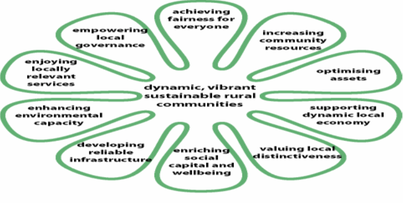 Sustainable Local Community Development – Slaney News It was only after the UN Earth Summit in Rio de Janeiro concluded in June 1992 that the concept of sustainable development became an attainable goal for all the people of the world whether local, national or regional and supported by 179 countries and multiple non-governmental organisations did the concept filter through to communities worldwide. The major result of the conference was Agenda 21, a new program to achieve overall sustainable development in the 21st century.
0 Comments
Sustainable Enniscorthy hosted its second Energy Saving Expo on Wednesday evening on 25 January in the Riverside Hotel. The free event gave people the chance to talk to local suppliers of energy-saving products and services to learn how to save energy and money in their home, transport, business and farm. The event was well attended, the atmosphere relaxed and the feedback positive. Yugandhar Patil from KRA renewables said “people are concerned about their electricity bills, they know the problem but they don’t know how to fix it”. He was “helping people to understand all the options and empowering them to make the best choices”. They had lots of enquiries about SEAI grants, particularly from homeowners considering home upgrades. KRA are project co-ordinators for the SEAI Communities Energy Grants which provide 30% to 80% funding to homes, businesses or farms depending on the project. KRA, an independent renewable energy and sustainability consultancy, are appointed by Sustainable Enniscorthy to produce an Energy Master Plan for Enniscorthy with funding from SEAI (Sustainable Energy Authority of Ireland). KRA have already carried out a few energy audits in Enniscorthy and they are offering 10% discount on commercial audits to organisations willing to share the information for the Enniscorthy Energy Master Plan. Scott Hayes from Love Energy Ltd was delighted with the number of people who were genuinely interested in his wind turbines. Scott has a few sites visits planned to discuss the feasibility of a wind turbine installation as a result of the event. Timmy O’Donovan at K&K Windows said visitors showed good interest in their windows and doors. He advised that the front door is a good starting point for energy saving at home. It is also a good investment, as a good composite door lasts up to 35 years! Mike Cody from E-volv had “good chats and good conversations” with people and “it’s all about the conversations” referring to the advice, business and networking benefits of the night. Solar Electric solar PV (photovoltaic) panels were popular again at this Expo. People are really interested in the technology and are getting more educated on solar PV and renewables. Anyone who already has solar PVs wants more, so they advise to choose your PV position carefully and leave space on the roof for more panels. Newer technology is more powerful and produces more energy. Wexford LEO Local Enterprise Office and Wexford County Council Environment section shared a stand, with Caroline answering queries about LEO’s Green for Micro business supports and getting lots of interest in the Home Energy Saving Kit which is available to borrow from all libraries in Co. Wexford. Liam Doyle from Doyle Boilers was very pleased with the Expo. He said he got business from the October event and expects the same again this time. Áine Doyle from Enniscorthy Credit Union was delighted to take part in the Energy Saving Expo again. She was encouraged to see so many local businesses, organisations and people working together to make Enniscorthy sustainable. The credit union plays its part offering a Green Loan with a great rate to help finance energy upgrades. Thomas McGuire, from the Irish EV (Electric Vehicle) Owners Association, is a long-standing supporter of Sustainable Enniscorthy starting at our first event outdoors on the riverside in September 2021. Thomas has a wealth of knowledge on EVs and had a Wallbox home charger on display to show people what’s involved. Paul Nolan from Kenny for Bikes found the credit union’s Green Loan fits in nicely with his Bike2Work promotion. Kenny for Bikes are an approved provider of the government-backed Cycle to Work scheme, which allows the tax free purchase of bicycles for those who may use a bike for all or part of their journeys to work, daily or occasionally. Paul describes electric bikes as “the future of our business”, explaining that electric bikes make up 60% of the product range of one of their main suppliers. The electric bike opens up cycling for more people and increases the distance people will travel on a bike. Jim and Sarah Byrne from JC Byrne Stoves and Fireplaces weren’t expecting as many people at the Expo and got quite a few enquiries. Previous customers dropped by and thanked them for what they’d done, which was lovely to hear. Word of mouth is great and people love the warmth of a stove. Sarah described the power of the 28kW stove in their showroom which heats the showroom and 17 radiators in the house! Fiona O’Loughlin, SEAI mentor, described the Energy Saving Expo as a very valuable professional networking event. She was impressed by the level of expertise available locally for every aspect of sustainability from reducing costs to increasing comfort with attractive green finance options from the credit union. Sustainable Enniscorthy would like to thank the Riverside Hotel for hosting the event and all the exhibitors and visitors for taking part in the Energy Saving Expo. Support Sustainable Enniscorthy by following us on Facebook or Instagram, see our website at www.sustainableenniscorthy.com or contact us to get involved! This month we look at sustainability and parenting and explore some options that can reduce our environmental impact without compromising on the development of our children. As every parent knows, during the baby phase nappies fill our general waste bin and so reusable nappy options are worth exploring to reduce this source of waste. You can borrow a kit of reusable nappies from the Wexford Town or Enniscorthy Cloth Nappy Library for a trial and see if they suit your situation. Single-use wipes are another big source of waste, with about 68 billion individual wet wipes being consumed in the EU-28 in 2017. Many of these single-use wipes contain plastics and are notoriously difficult to break down, clogging sewage systems and polluting marine environments. Why not consider reusable options like repurposing cotton towels/facecloths to use instead – they are soft, clean really well and can be popped into the wash or a wet bag when out and about. If you prefer you can purchase reusable cloths and kits from Cheeky Wipes or check out local online business The Nappy Market.
Toys can be another source of waste. Research published in the Infant Behaviour and Development journal found that fewer toys at a time supports quality playtime for children allowing them to build concentration and focus and play more creatively. We can reduce wasted toys by first asking “Does my child need this toy?” or “Do I already have something that would serve the same purpose?” When toys are needed, why not give a used toy a new home? There are multiple websites to check out for preloved toys and books, along with many other items for babies and children (for example www.adverts.ie, Facebook Market, and local parent’s support groups). If buying a new toy, try to avoid plastic where possible. Jimini Eco Toys is one example of an Irish website offering sustainable options. Renting toys is also becoming increasingly popular, for example DluluKaloo Wooden Toys and wooden toy rentals. It is also possible to rent other baby products too, for example you can hire baby slings/carriers from the National Sling Library. Check out Circular Living Website for a whole list of sustainable Irish websites. Your local library is another fantastic way to share resources. Not only are they a free option for exploring all the latest books for all ages, they also have story sacks (books with associated puppets) available to use in house too – a great way to see what interests your little reader. All libraries in Co. Wexford have fantastic Sensory Toys and Assistive Resources (STAR) for children and young people with additional needs too. As well as lots of activities and groups to bring parents and children in the local community together. Making more sustainable choices can be as simple as getting and passing on preloved clothes and toys. When we share and borrow, we don’t need to buy as much. This not only reduces waste but it also saves money and strengthens community connections. At beginning of April the Final Report of the Citizen’s Assembly on Biodiversity Loss was officially launched, following agreement across on a potentially transformative suite of 159 recommendations. This marks a significant milestone along the journey to protect Ireland’s natural heritage and is a timely opportunity to consider what exactly is Biodiversity? And why is it so important to us?
Biodiversity is shorthand for biological diversity and refers to all life on Earth. The living world is a fascinating and varied place, encompassing a dizzying assortment of plants, animals, insects, birds and marine life, each carving a niche for themselves. We are proud of the greenery of Ireland’s world-renowned landscapes, which attract tourists from near and far and are important to our natural heritage. However, as the Citizen’s Assembly Report highlights, this reassuring greenery also masks the fact we are increasingly squandering the natural wealth we inherited, a situation underlined by the Government’s declaration of dual Climate and Biodiversity Crisis in 2019. If we look a little closer at what biodiversity contributes to our daily lives, we see why this is a crisis worth understanding and acting on. The benefits of biodiversity are both direct, like food, timber and other raw materials, and indirect, like pollination, regulating water and air quality, as well climate, and we can’t forget all the health and well-being effects from time spent surrounded by nature too. Areas that are particularly rich in biodiversity, for example bogs and wetlands, provide crucial ecosystem services, as well being wonderful places to visit. These ecosystem services (watch this video by EU Environment for a great introduction) are so important that human life would not be possible without them. We know our biodiversity is struggling based on reports from multiple agencies, some of which are focused on individual aspects of biodiversity like pollinators and birds, and others which look at broader trends like the EPA’s State of the Environment Report and the NPWS Article 17 Reports. The number of insects and birds are key indicators to biodiversity and startling statistics such as a 98% decline in the number of curlews in just 30 years illustrate how we are trending in the wrong the direction. We can also see signs of the decline in our daily lives, do you remember when the front of your car used to be covered in insects? We ask a lot of nature yet human activities undertaken without regard for nature are the underlying cause for biodiversity loss and ecosystem collapse. These activities include changes in the use of land and sea, direct exploitation of species, pollution, and human-induced climate change. There are many useful resources out there to help us on our journey to reversing biodiversity loss but the first step is take a moment to listen to nature, wherever you find it, and make space for it in your life and in your decision-making. This video on the National Biodiversity Data Centre’s Maps can introduce you to some of the fascinating biodiversity right on your doorstep! Resources to get started: https://citizensassembly.ie/citizens-assembly-on-biodiversity-loss/ https://www.youtube.com/watch?v=jH-KHpLEIeY https://biodiversityireland.ie/ https://biodiversityireland.ie/top10/10-ways-to-help-biodiversity/ https://iwt.ie/ https://bsbi.org/wp-content/uploads/dlm_uploads/2023/02/BSBI-Plant-Atlas-2020-summary-report-Ireland-WEB.pdf https://www.ibcp.ie/ https://www.naturalcapitalireland.com/resources https://environment.ec.europa.eu/strategy/biodiversity-strategy-2030_en https://www.cbd.int/ https://www.unep.org/un-biodiversity-conference-cop-15 Links within article: https://citizensassembly.ie/wp-content/uploads/Report-on-Biodiversity-Loss_mid-res.pdf https://www.irishtimes.com/environment/climate-crisis/2022/11/17/biodiversity-and-climate-crises-must-be-addressed-in-tandem/#:~:text=On%20May%209th%2C%202019%2C%20D%C3%A1il,inside%20and%20outside%20the%20chamber. https://www.youtube.com/watch?v=D6luBEJfi3s https://pollinators.ie/resources/ https://birdwatchireland.ie/publications/birds-of-conservation-concern-in-ireland-bocci-2020-2026/ https://www.epa.ie/our-services/monitoring--assessment/assessment/irelands-environment/state-of-environment-report-/ https://www.npws.ie/publications/article-17-reports https://www.youtube.com/watch?v=106pEX3vi7M Photo Credit: Marton Zsoldos Sustainable Enniscorthy is a voluntary group of local people with a vision to work together with all stakeholders and communities in Enniscorthy to create a thriving sustainable town. We see our role in 2 ways. Firstly to raise awareness of sustainability by facilitating, advocating, helping make connections, delivering small projects and supporting the work of others. Our second role is to be a driver of actions to support sustainability and health and wellbeing in Enniscorthy. The 17 UN Sustainable Development Goals (UN SDGs) are a blueprint for our vision.
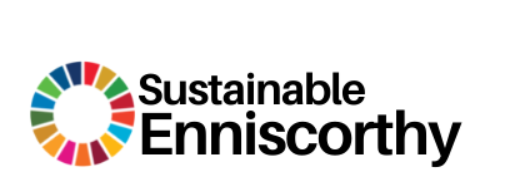 Stop Food Waste Reducing your food waste helps the environment and saves money too. Stop Food Waste is the national campaign to give you information and tips on how to make the most of your food and avoid food waste. www.stopfoodwaste.ie. Will you take the Stop Food Waste 7-Day Challenge? 1 March was National Stop Food Waste Day and we are invited to record our food waste for one week to identify what types of food we waste most. To record the food that goes into your food bin, you could:
The average Irish household can save around €700 a year by avoiding food waste. In the most recent national food waste attitudes survey commissioned by the Environmental Protection Agency, three food types were identified as those wasted most often in Ireland:
Bread - Freeze it and Eat It!
Find Stop Food Waste on: ****************************************************************** Sustainable Enniscorthy is carrying out a community energy survey linked to the development of an Energy Master Plan for Enniscorthy. We’d appreciate you taking the time to complete it! https://docs.google.com/forms/d/e/1FAIpQLSfYhR18DpPgP6jP39MoFtZ8i_evCB11IiJm4gNrBVBWV5KaKQ/viewform?vc=0&c=0&w=1&flr=0  Energy Saving - Jan 2023 Saving energy has never been more important, especially in the face of significant increases in energy costs and there have been lots of articles in the media over the past few months setting out the many ways to save energy from small tips and tricks to large retrofitting projects. But all this info can be overwhelming and it can be hard to know where to start and what actions will make the most difference in your home, so here is some advice from the Sustainable Enniscorthy team based on our experience of doing our own project and some of our expertise! 1: Know your use It sounds simple, but it is really important to understand what fuels you are using and how much they cost over a year, particularly for oil and solid fuels. Keep a track of your fuel usage for a year, both the amount of fuel used by type and the cost as this makes it easier to understand if changes to your heating system will reduce your costs. For electricity, it is really helpful to use an energy monitor, even just for a month or two. These can show you what appliances in your home use the most energy and help you figure out if there are any electrical goods using much more energy than you thought! There are lots of these available online such as the Owl Monitor of the Efergy Monitor. These are easy to set up yourself and are wireless and portable so you can easily walk around your home switching on and off appliances to see how much energy they are using. They can also give daily/weekly/monthly consumption as well. You can also borrow a Home Energy Saving Kit from Wexford Library, Gorey Library & Enniscorthy Library. The Kit contains six simple tools to help you assess how energy efficient your home is and identify possible problem areas for improvement. Knowing your electricity use in more detail can also help you figure out if solar panels might be a good investment to help you reduce your bills, especially now that electricity companies are paying for excess energy produced. 2. Short term goals There are a few relatively simple and low cost actions that most households can make over the coming year. These may not knock hundreds off your bill but can help make your current heating systems work more efficiently and burn less fuel.
Once you better understand what your heating and electricity costs are and have taken some of the smaller steps you can figure out if you want to look at bigger measures, like insulation or changing your heating system. Some of these are supported by grants through the SEAI. However there are also other actions that have a big impact but are not currently grant supported, for example changing from open fire or older stoves to new efficient stoves or upgrading your older oil boiler to a new boiler.  A BUSY YEAR The Sustainable Enniscorthy Team took a little break during July to recharge the batteries after a very busy year so far. Here's a short overview of all that we were working on and a preview of what's coming before the end of 2023! Irene Cadogan (Chair) ChangeX Projects The group have been working on three separate projects in association with ChangeX and Accenture. (1) The Green plan which aims to help people make simple changes to reduce their carbon footprint, (2) Freshwater Slaney, a citizen science project measuring water quality of the Slaney (3) Setting up our first Repair Cafe Find out more on ChangeX or our website Sustainable Energy Community Our energy master plan for Enniscorthy is almost complete and we look forward to launching it in the coming months. To support this work we ran two very success energy expo's to share energy saving advice across the community. Working with others We were delighted to work with other community groups and stakeholders to support the development of the TASC Community Climate Action report for the Town and we look forward to support the development of the suggested projects. We also continue to work with and support other groups such as Tidy Towns and the Community Allotments too. Coming Soon Over the coming months we will be hosting the launch of our energy efficiency master plan for the Town, more repair café's, biodiversity walks, topical talks, more Slaney News articles and some special events. Keep an eye on our Facebook page for more details! A massive thank you to everyone who has supported us and the work we are doing. I'd like to say a particular thank you to the hard working committee as well!! We're always happy to welcome new members as well, so don't hesitate to Article on: Refuse, Reduce, Reuse, Recycle
When shopping have you ever considered the amount of packaging used on products you purchase? It is estimated that approximately half of plastic produced worldwide is single use. Vast amounts of plastic, metal, cardboard and paper are used in food, drink and other products we purchase. All this packaging has an environmental impact to produce, recycle and dispose. Are you familiar with the 3Rs term? Reduce, Reuse and Recycle. Recently a fourth ‘R’ Refuse is gaining momentum. It is asking us to rethink and Refuse unnecessary packaging before we purchase a product. (Sustainable Enniscorthy monthly column for Slaney News July issue)
Sustainable Fashion The fast fashion industry is among the world’s most polluting industries, contributing substantially to global water waste and greenhouse gas emissions. The clothing choices we make have significant environmental impact. Those choices include how much we buy, what we buy, how much we wear our clothes, how we care for them, and what we do with them when we no longer want them. |
AuthorIrene Cadogan Categories
All
Archives
September 2023
Categories |

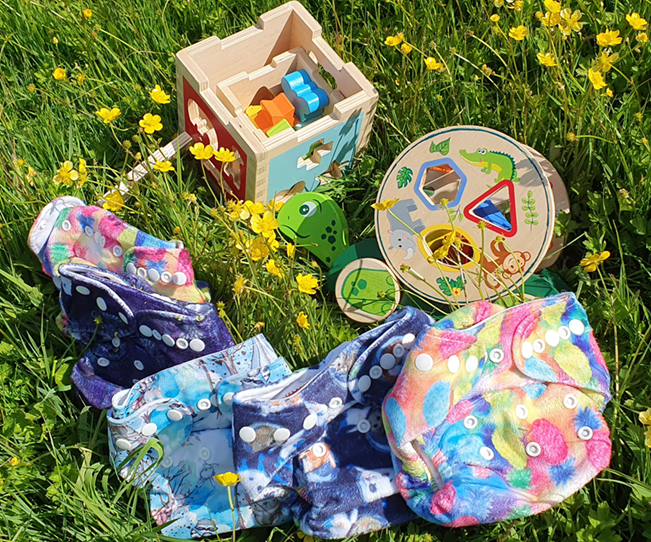

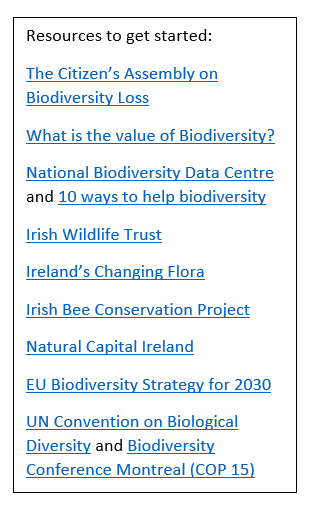

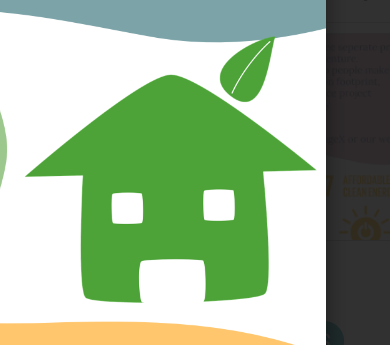
 RSS Feed
RSS Feed